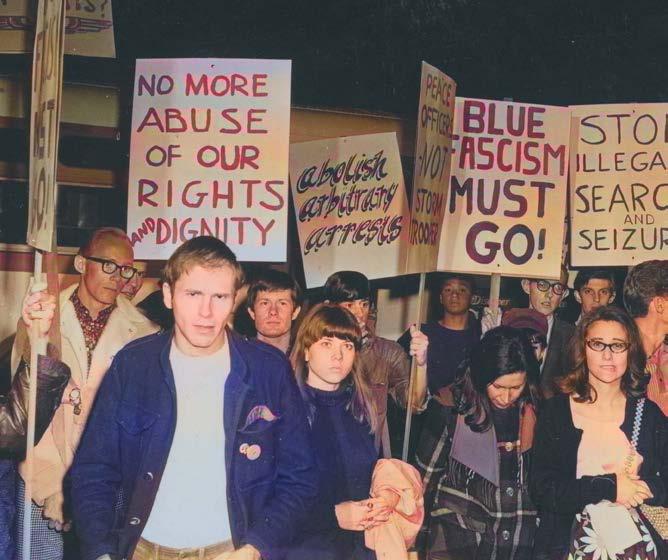
2 minute read
Why do we celebrate Pride Month? Equality emerges because of the 1969 Stonewall Riots
Pride Month, observed annually in the United States, holds tremendous significance as a month-long celebration that commemorates the progress and struggles of the LGBTQ+ community. Its origins can be traced back to the historic Stonewall Riots that unfolded in June 1969 in New York City. These events represented a pivotal moment in LGBTQ+ history and served as a catalyst for the modern gay rights movement.
The Stonewall Riots erupted as a response to the persistent oppression and discrimination faced by the queer community at that time. The uprising emerged from a collective yearning for change and justice. The brave actions of LGBTQ+ individuals and their allies during those transformative nights ignited a renewed wave of activism and empowerment within the community.
In the aftermath of the Stonewall Riots, the LGBTQ+ community began organizing and asserting their rights. The inaugural Pride March, originally known as Christopher Street Liberation Day, occurred on June 28, 1970, to commemorate the first anniversary of the Stonewall uprising. This march laid the groundwork for what would later evolve into Pride Month.
As years passed, Pride Month underwent an evolution, transforming into a monthlong celebration that acknowledges the achievements of the LGBTQ+ community while advocating for equality. It has become a platform for raising awareness, advocating for LGBTQ+ rights, and fostering a sense of unity and belonging. Pride Month festivities, encompassing parades, parties, and cultural events, have ingrained themselves in American society, promoting acceptance and celebrating the diverse spectrum of sexual orientations and gender identities.
Today, Pride Month extends beyond the borders of the United States, gaining recognition worldwide as a symbol of LGBTQ+ resilience, visibility, and progress. It serves as a time for reflection on the historic significance of the Stonewall Riots and the ongoing journey towards achieving equal rights and acceptance for all. Pride Month stands as a testament to the unwavering spirit of the LGBTQ+ community and the collective efforts of individuals and organizations striving towards a more inclusive and equitable future.
While acknowledging the broader context of Pride Month, it is important to note that during his presidency, Bill Clinton made noteworthy contributions to LGBTQ+ rights. He took historic steps towards promoting equality and recognition of Pride Month.
In 1999, Clinton became the first U.S. president to issue an official proclamation designating June as “Gay and Lesbian Pride Month.”
Through this proclamation, President Clinton demonstrated his support for the LGBTQ+ community and acknowledged their vital contributions to society. His action significantly raised awareness and visibility for Pride Month on a national scale, highlighting the ongoing struggle for LGBTQ+ rights and imperative for greater acceptance and equality.
President Clinton’s proclamation established an important precedent for future administrations to acknowledge and honor Pride Month. This tradition has been carried forward by at least two presidents, including Barack Obama and Joe Biden, who have continued to issue their own proclamations, reaffirming their







